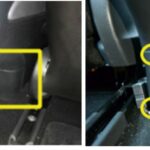The question of converting an OBD2 automatic ECU for use in a manual transmission setup is a common one in the car modification community. Many enthusiasts wonder if it’s possible to retain their existing automatic Engine Control Unit (ECU) after swapping to a manual gearbox, especially on OBD2 systems. Let’s delve into this topic, drawing upon real-world experiences and technical understanding to explore the possibilities and challenges.
Can You Run a Manual Transmission with an Automatic OBD2 ECU?
It appears that it is indeed possible, although it’s not always a straightforward plug-and-play situation. One documented case involves a JDM (Japanese Domestic Market) EK3 Honda Civic. This model, originally equipped with a D15B 3-stage VTEC engine and a CVT (Continuously Variable Transmission), was successfully converted to a manual gearbox while still utilizing the original automatic ECU.
In this particular instance, because the vehicle was OBD2A, the Engine Control Module (ECM) and Transmission Control Module (TCM) were separate units. This separation is a key factor in understanding potential workarounds.
However, simply swapping the gearbox and keeping the auto ECU introduces several issues. Common problems encountered include:
- Rev Limit and VTEC Engagement: The engine may start and run when in Park (P) or Neutral (N), but it might be restricted to around 5000 RPM and VTEC (Variable Valve Timing and Lift Electronic Control) may not engage.
- Starting in Drive (D): Conversely, attempting to start the car in Drive (D) might prevent the engine from starting altogether. However, if started by bypassing safety mechanisms, the engine might then operate with full RPM range and VTEC functionality.
These symptoms suggest that the automatic ECU is looking for signals from the missing automatic transmission. Without these signals, it may enter a default or restricted mode. The core challenge lies in “tricking” the ECU into thinking it’s still connected to an automatic transmission, or bypassing the need for those signals altogether.
ECM vs. TCM and the Tricking Process
The fact that the car can start and run, even with limitations, indicates that the Engine Control Module (ECM) can function independently to some extent. It’s mentioned that another individual successfully cranked the engine without the TCM connected at all. This observation aligns with technical documentation stating that the TCM receives input from both transmission sensors and the ECM. This implies the ECM will still operate, at least to a basic degree, even without the TCM present.
The “tricking process” likely involves simulating the necessary signals that the automatic ECU expects from the transmission. This could involve manipulating wiring or sensor inputs to bypass the checks related to the automatic gearbox.
OBD2B and PCM Considerations
OBD2B systems differ from OBD2A in that the TCM and ECM are often integrated into a single unit called the Powertrain Control Module (PCM). While there isn’t definitive proof yet, the principle of tricking the ECU is believed to be similar for OBD2B systems. However, the integrated nature of the PCM might introduce additional complexities.
Manual ECU: The Ideal but Rare Solution
Ideally, using a manual ECU is the preferred solution. Manual ECUs are programmed specifically for manual transmissions and avoid the issues associated with automatic ECUs in manual setups. However, manual ECUs for certain models, particularly older OBD2 vehicles, can be quite rare and difficult to source.
Furthermore, manual ECUs and automatic ECUs can have slightly different hardware requirements. For example, automatic ECUs may utilize a 3-wire Idle Air Control Valve (IACV) and narrowband oxygen (O2) sensors, while manual ECUs might be designed for a 2-wire IACV and wideband O2 sensors. These differences need to be considered when contemplating an ECU swap.
Conclusion
Converting an OBD2 automatic ECU for manual transmission use is potentially achievable, but it requires careful consideration and likely some degree of electrical modification to “trick” the system. While using a manual ECU is the optimal solution, it may not always be practical due to rarity and potential hardware differences. Further research and potentially consulting with experienced mechanics or tuners familiar with your specific vehicle model is highly recommended before undertaking such a conversion.
